Reclaiming a lost art: The carpet weavers of Borchali
For generations, women in Georgia’s eastern Kvemo Kartli region were known for their beautiful carpets, full of painstaking patterns that reflected the lives and traditions of the community. The carpets, known as Borchalou rugs due to the region’s former name, Borchali, were different from other rugs weaved in the Caucasus and Iran due to the weaving techniques and designs the women used.
Most Borchalou rugs are full of mythological, not religious, symbols. The tree of life, a popular carpet design, represents a custom of the local ethnic Azerbaijani community: when a boy is born in a family, the new parents would plant a poplar tree.
Traditionally, girls learned how to weave from their mothers and grandmothers—they prepared handmade carpets as part of their dowry. Women slowly forgot the artform as local culture changed during the Soviet era, however. Today most weavers are over the age of 50. Kosalari is the only village in Kvemo Kartli where traditional carpet weaving is still alive, in large part due to reWoven, an NGO created in 2007.
Elnur Alisoy, 31, is a PhD student in Caucasus studies and the CEO of reWoven. The NGO was originally created by an American family. After their tragic murder, Elnur and other volunteers decided to continue their work.
“Ethnic diversity enriches the country. Many of us don’t know what is happening in ethnically diverse regions. Through this project, I decided to show how this tradition was re-established and how it survives by being passed from generation to generation,” he said.
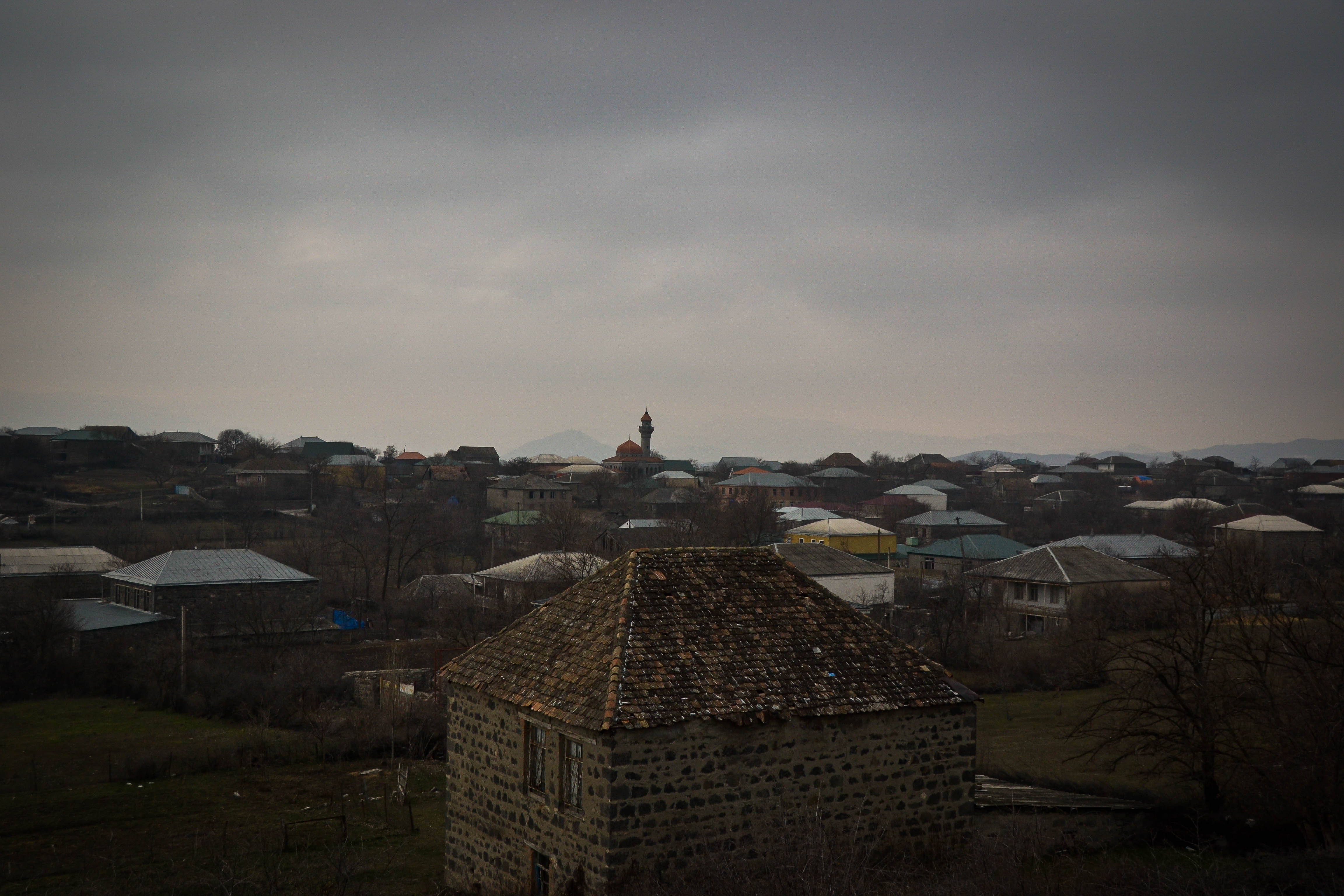
The village of Kosalari.
Today there are about 15-20 women employed in two villages - Kosalari in Kvemo Kartli region and Iormughanlo in Kakheti region. The carpets they weave are sold around the world. The prices range from $400 to $2000 depending on the size. It takes the weavers between one to four months to complete a carpet. They use 100 percent natural wool with natural colors.
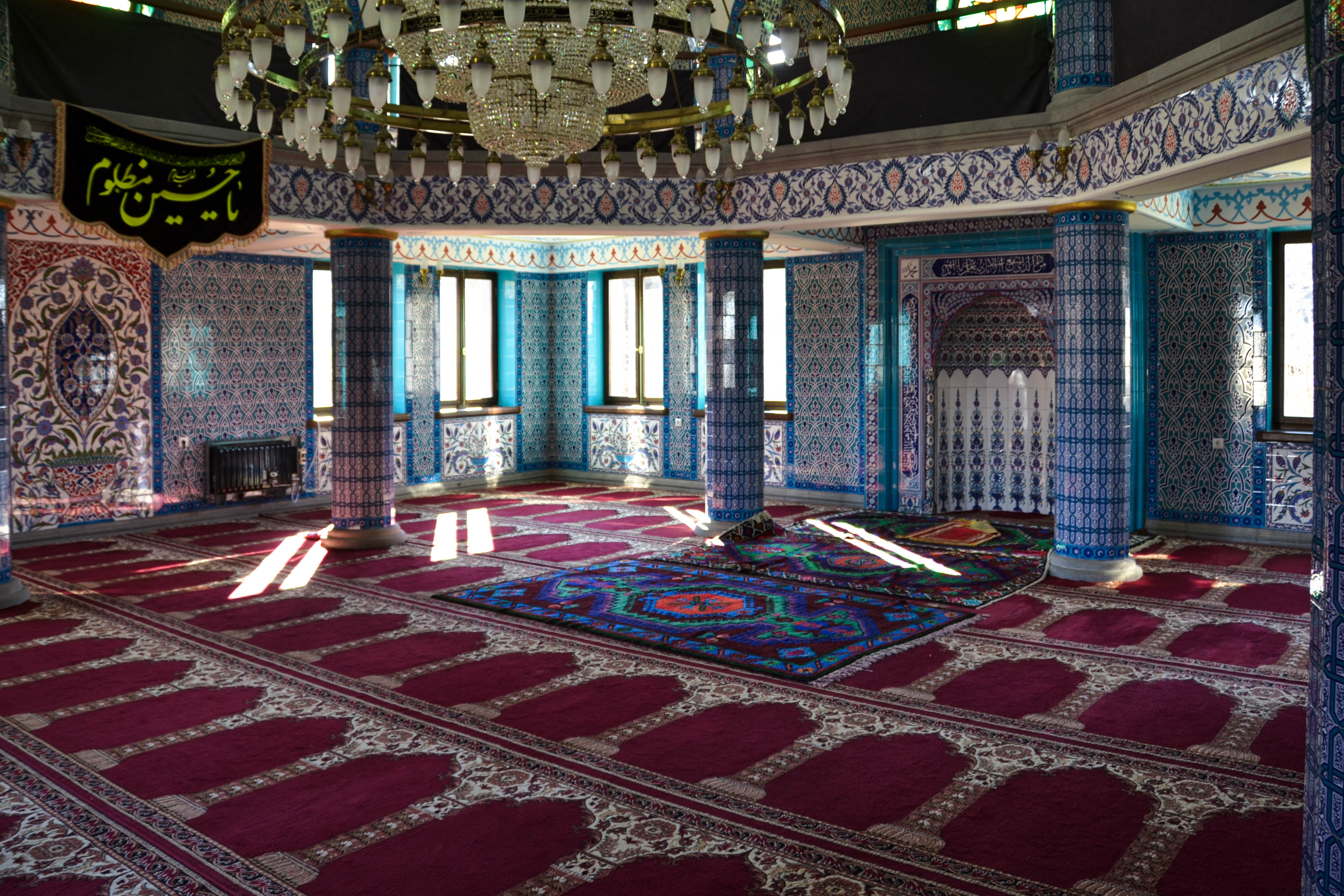
The village mosque in Kosalari. The carpets used in mosques usually depict the shape of a mosque and face Mecca.
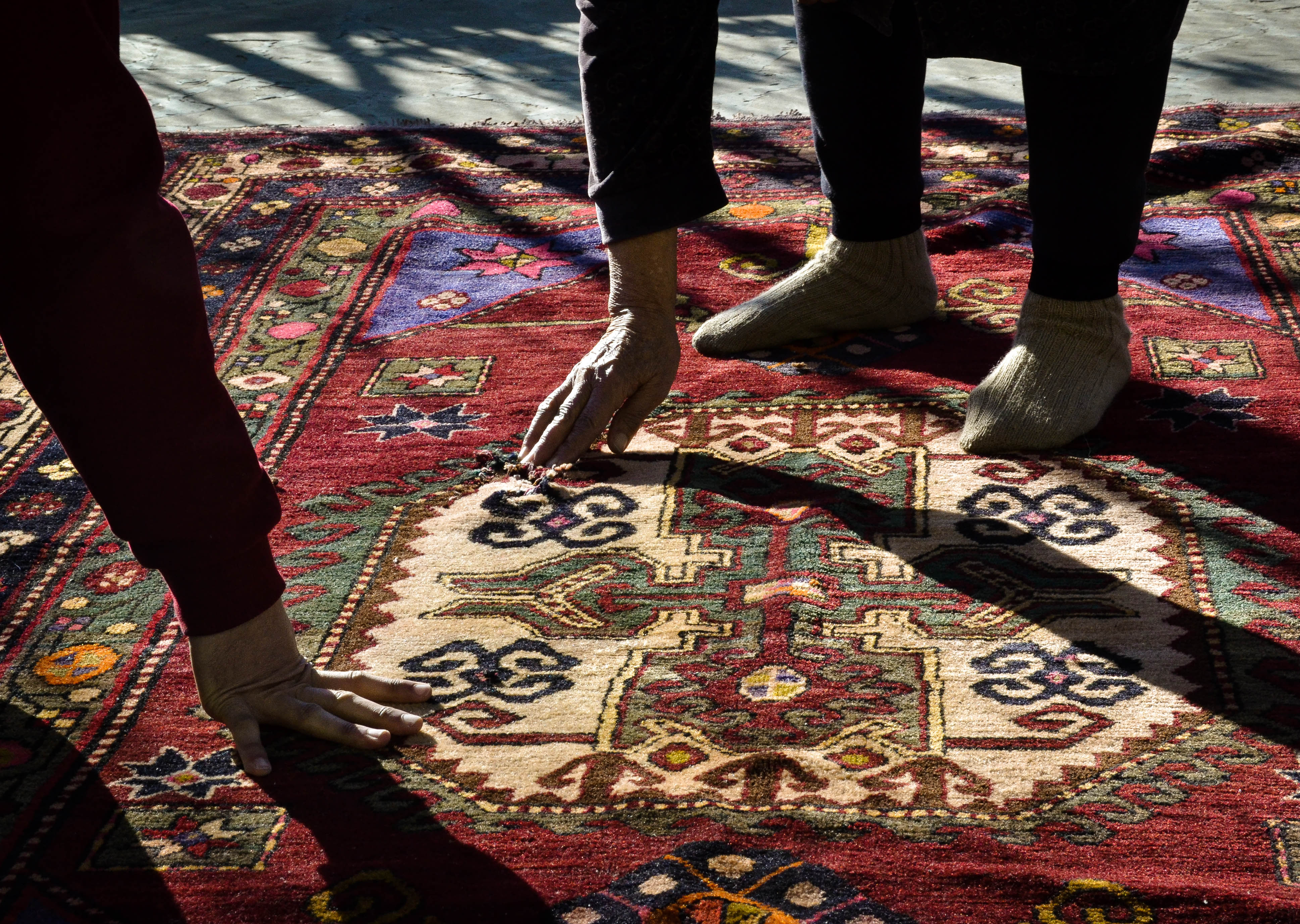
Generations of women weaved carpets to warm their homes and as gifts and dowries. Traditionally, girls weaved six carpets for their dowry: four for the floors, one for the wall, and one for the ceiling of their in-law’s house.

Fatima Kajarova, 73, (left) and Elnur Alisoy, 31, CEO of reWoven, discuss how to repair a torn carpet. The carpet is 66 years old.

A weaver cuts yarn for a carpet. Through reWoven, women receive orders for Borchalou carpets from around the world.
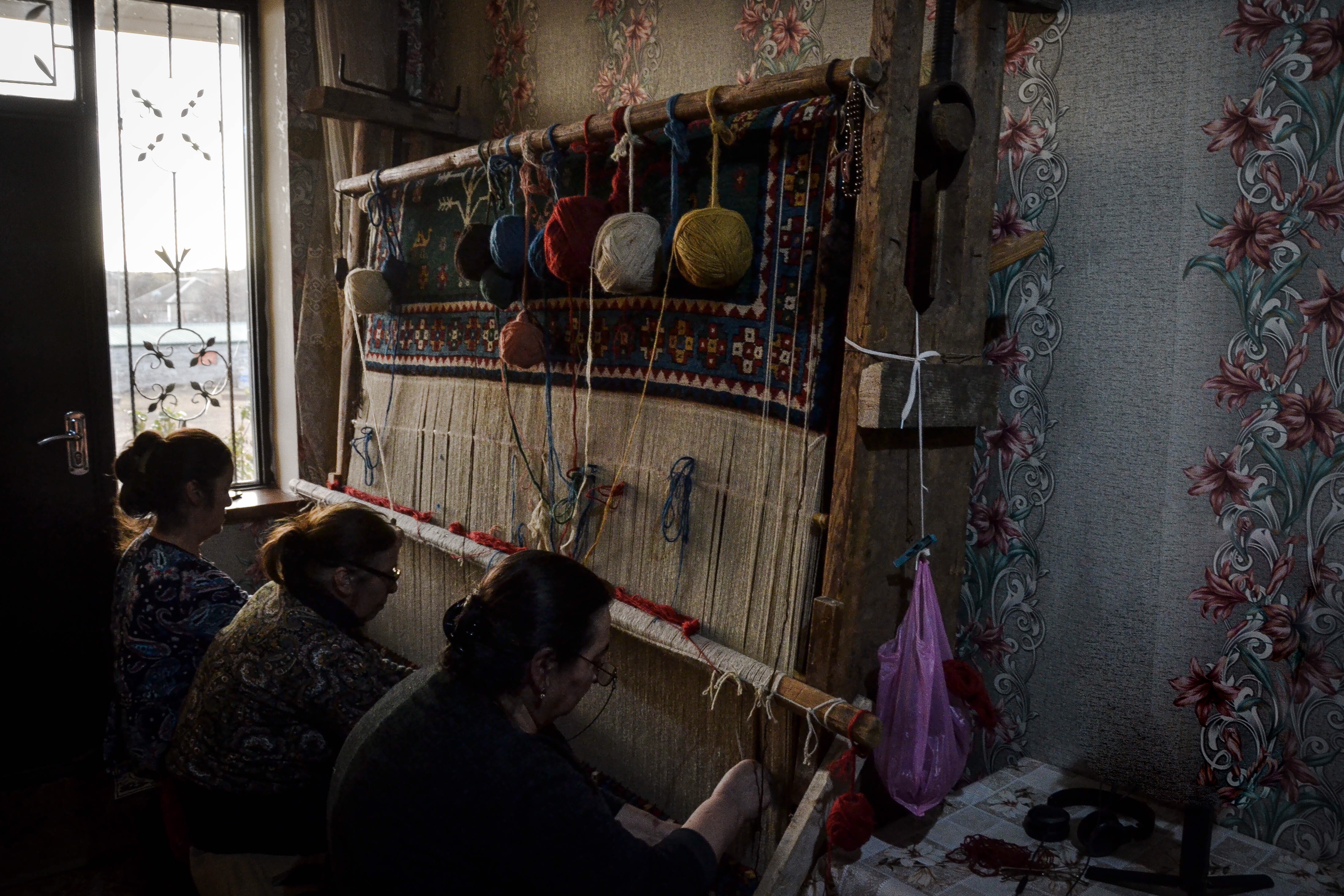
Weavers work on a rug in Kosalari, where reWoven is based. The craft dates back to the 19th century, when the community was known as Borchali. Today the women’s carpets are known for their geometric designs.
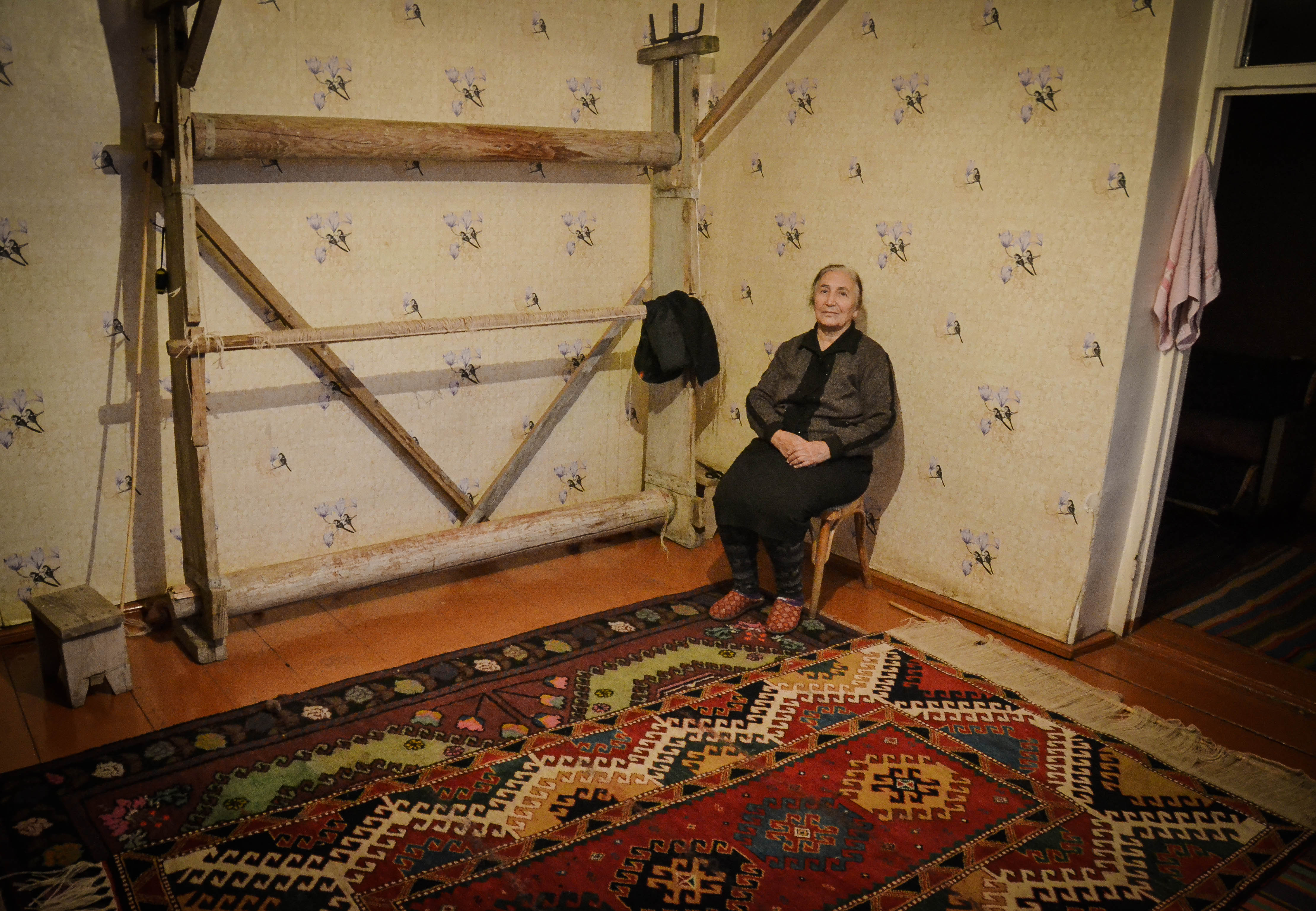
Fatima Kajarova,73, in front of her loom where she made her rug that covers the floor. Fatima started weaving rugs when she was ten. She remembers that she and her younger sister used to sit next to their grandmother and learn how to weave. Homemade carpets used to provide a little extra income for the family, she recalls, although she stopped weaving in the 1990s, when the struggle to survive took precedence. When reWoven opened, she got a job and now she makes four to five carpets a year. Five generations of women in her family know how to weave, including her granddaughter.

Tukazban, 70, is Fatima’s sister and lives in Kosalari. She learned how to weave when she was seven. “It’s my hobby and it was a hobby for most of the women living in Kosalari village,” she says. She used to teach math at the local high school and taught some of her pupils how to weave. The oldest carpet she has at home is 40 years old.

Tukazban is working on a Tree of Life carpet.

Handmade yarn at Fatima Kajarova's home.

Weaving tools and the pattern for a Tree of Life carpet.

Minaia Garagashova,60, works on a Karachopt rug, which will take about three to four months to complete.

Minaia learned how to weave as a child, both carpets and dresses. Her neighbors in Kosalari often come to her house to discuss weaving techniques.

Tukazban Kajarova pulls back the rug on her loom, exposing the carpet behind it.

Zenfira Kajarova, 62, moved to Kosalari when she got married at the age of 17. Her mother-in-law taught her how to weave carpets over 45 years ago. The rug behind her is known as the Tree of Life, a popular design based on a myth.
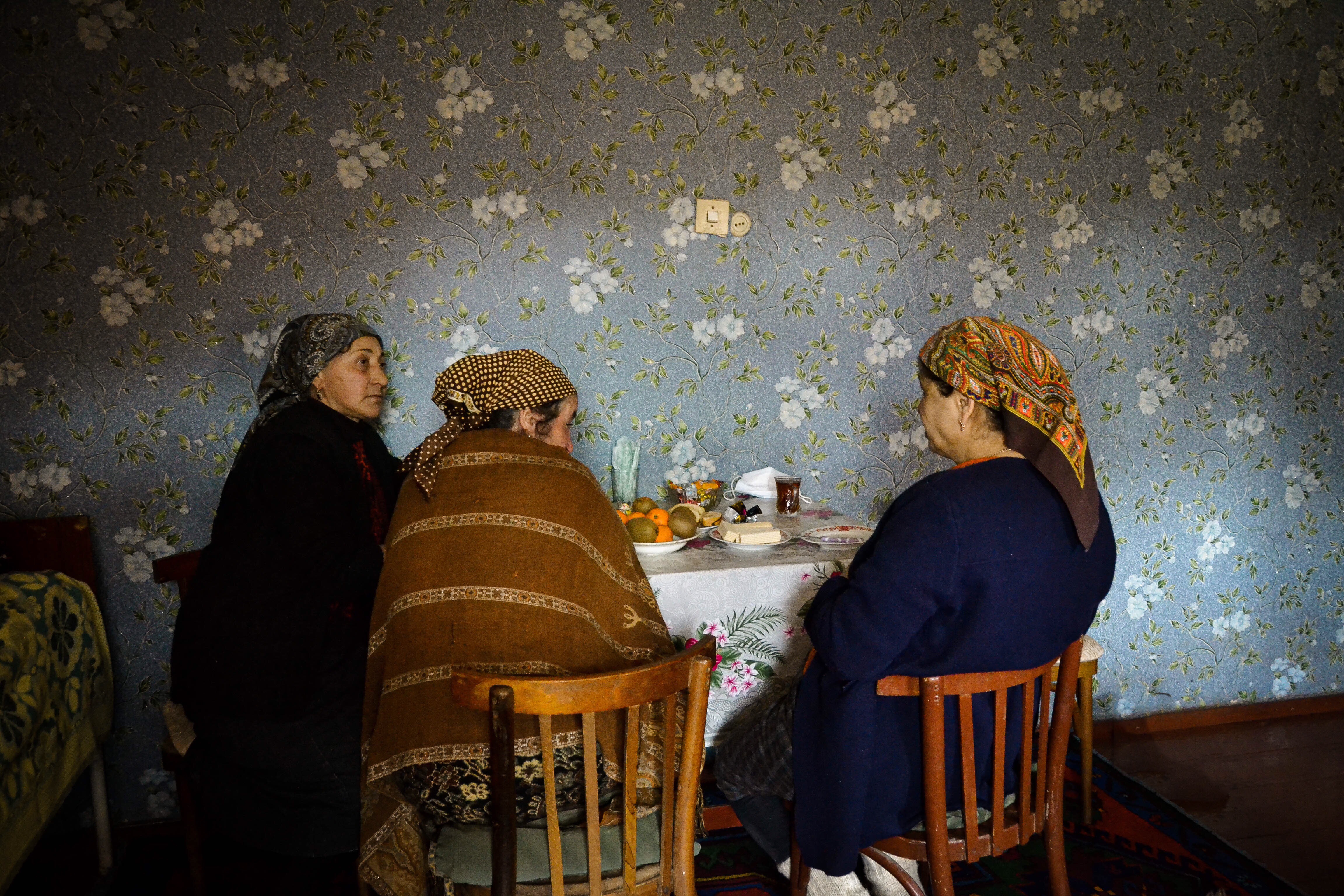
Minaia and her neighbors take a break from weaving to discuss rug designs and techniques at her house.

Minaia and her neighbors discuss the best techniques to create an exact duplicate of the small rug on the floor.
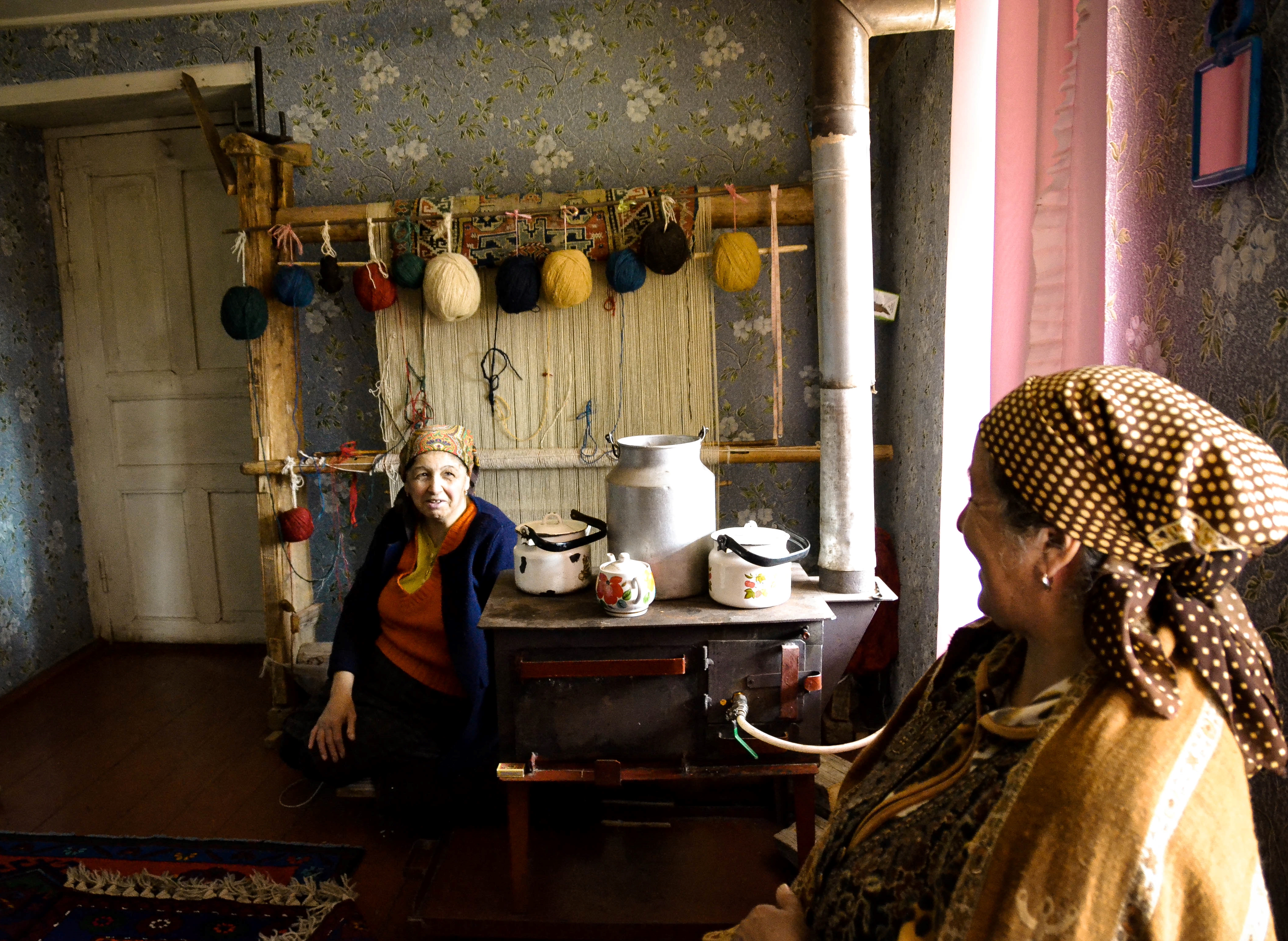
Mina Ramazanova (left) moved back to the village from Russia, where she spent most of her life. Now 60, Mina has returned to weaving after giving up the hobby for many years. She said her neighbors in Russia used to compliment her on the handmade carpets she had in her home there.
DONATE NOW

